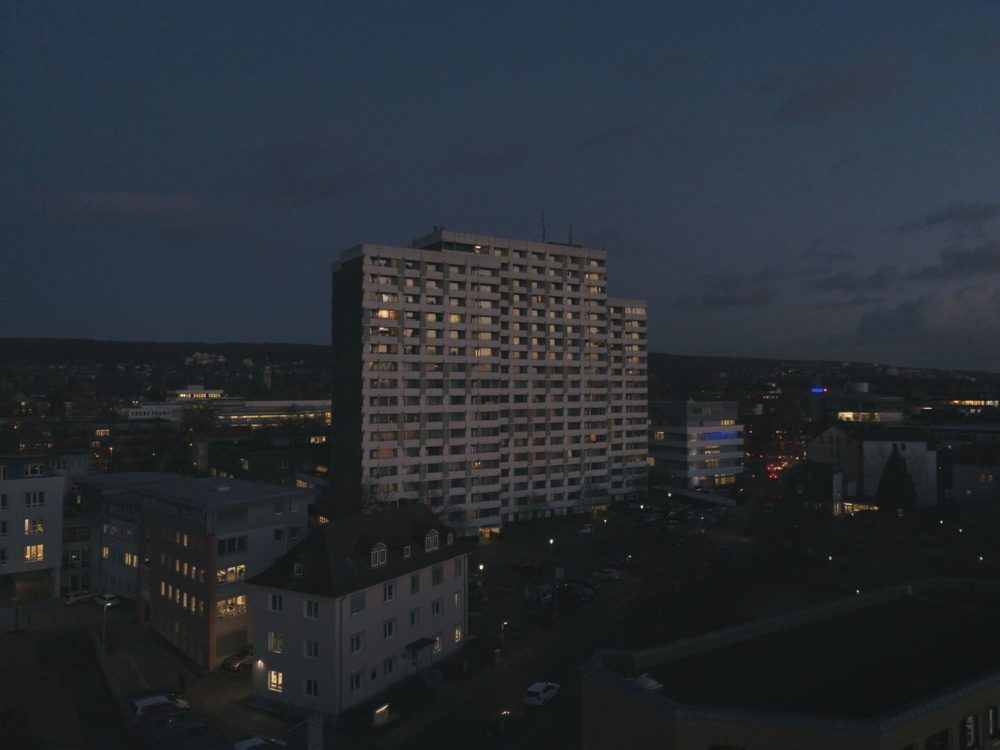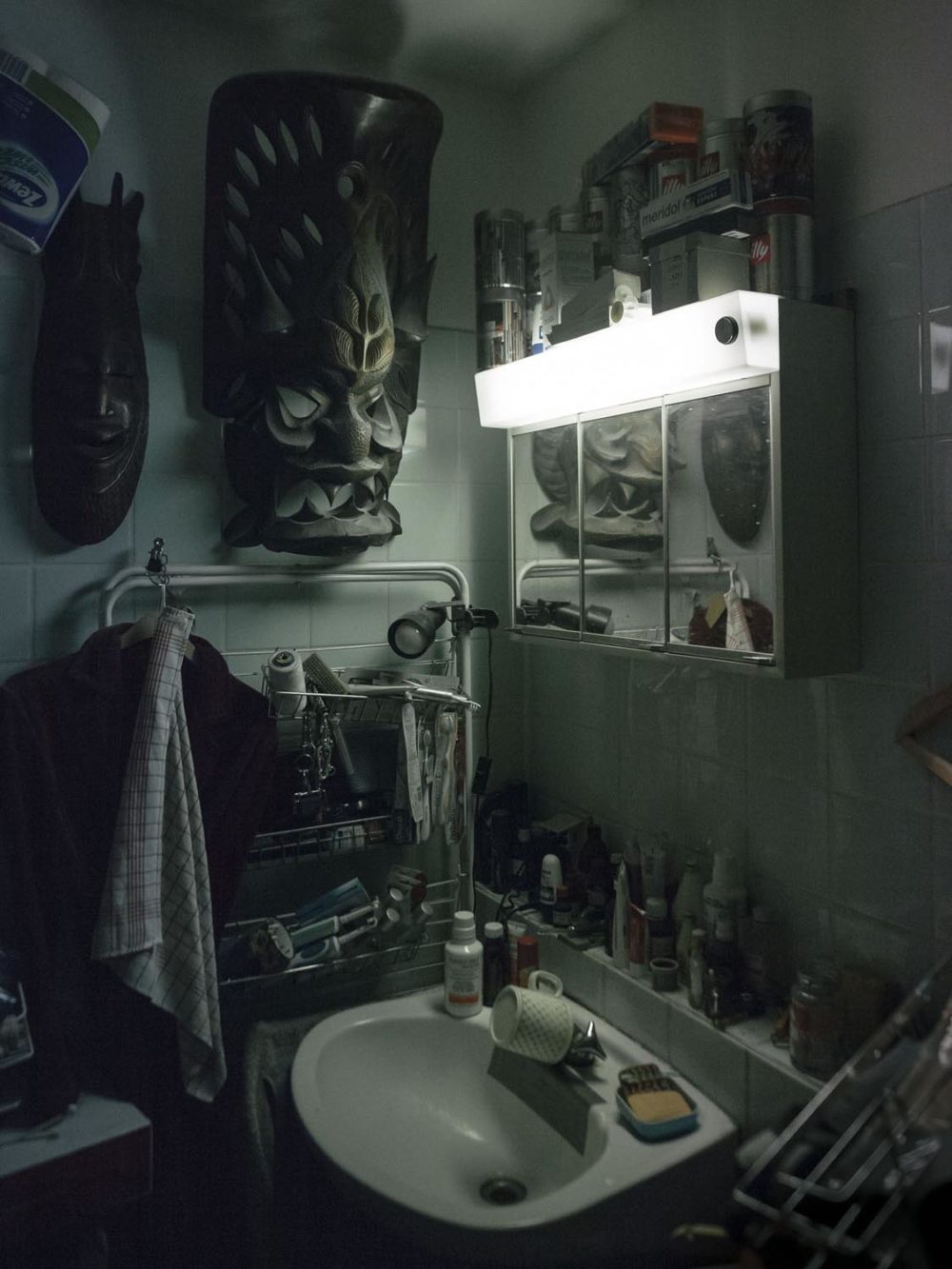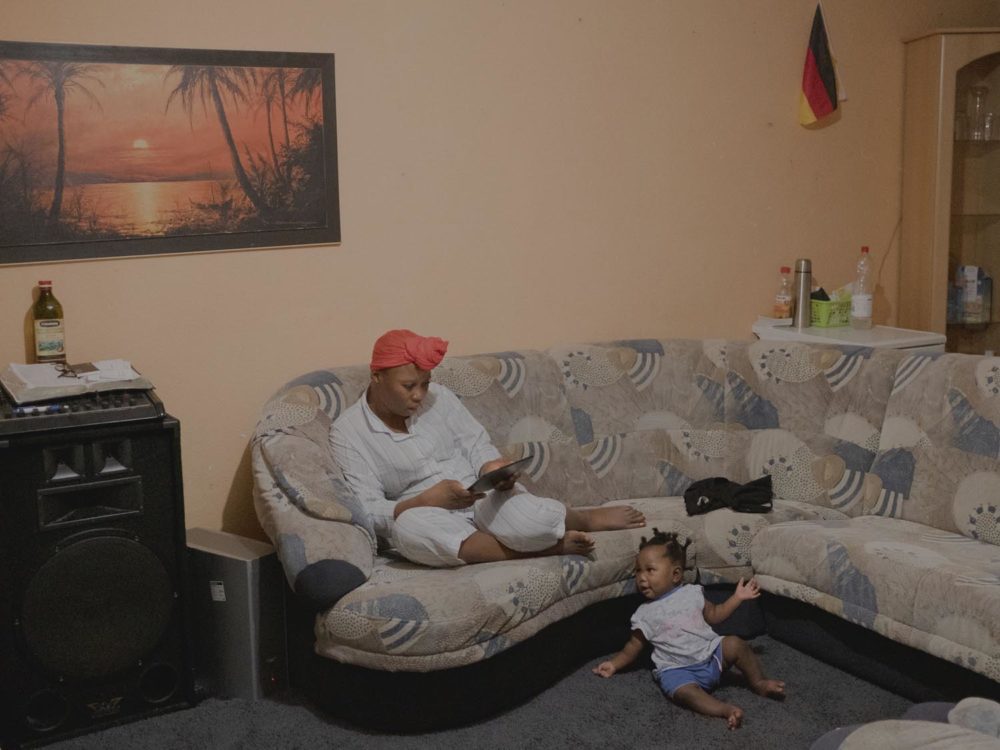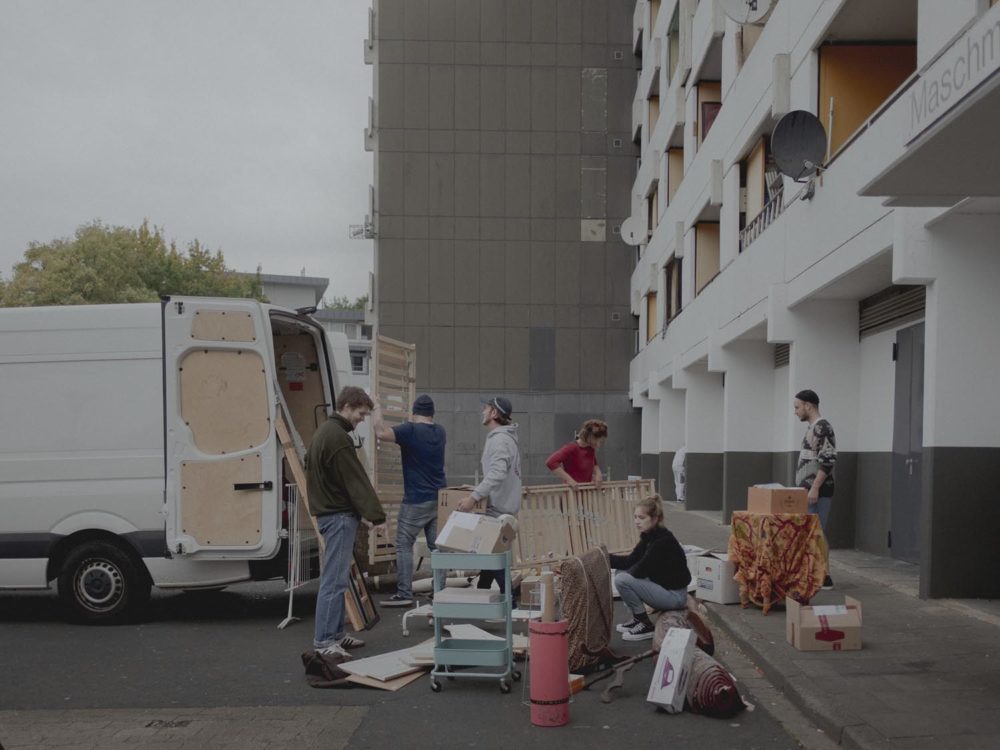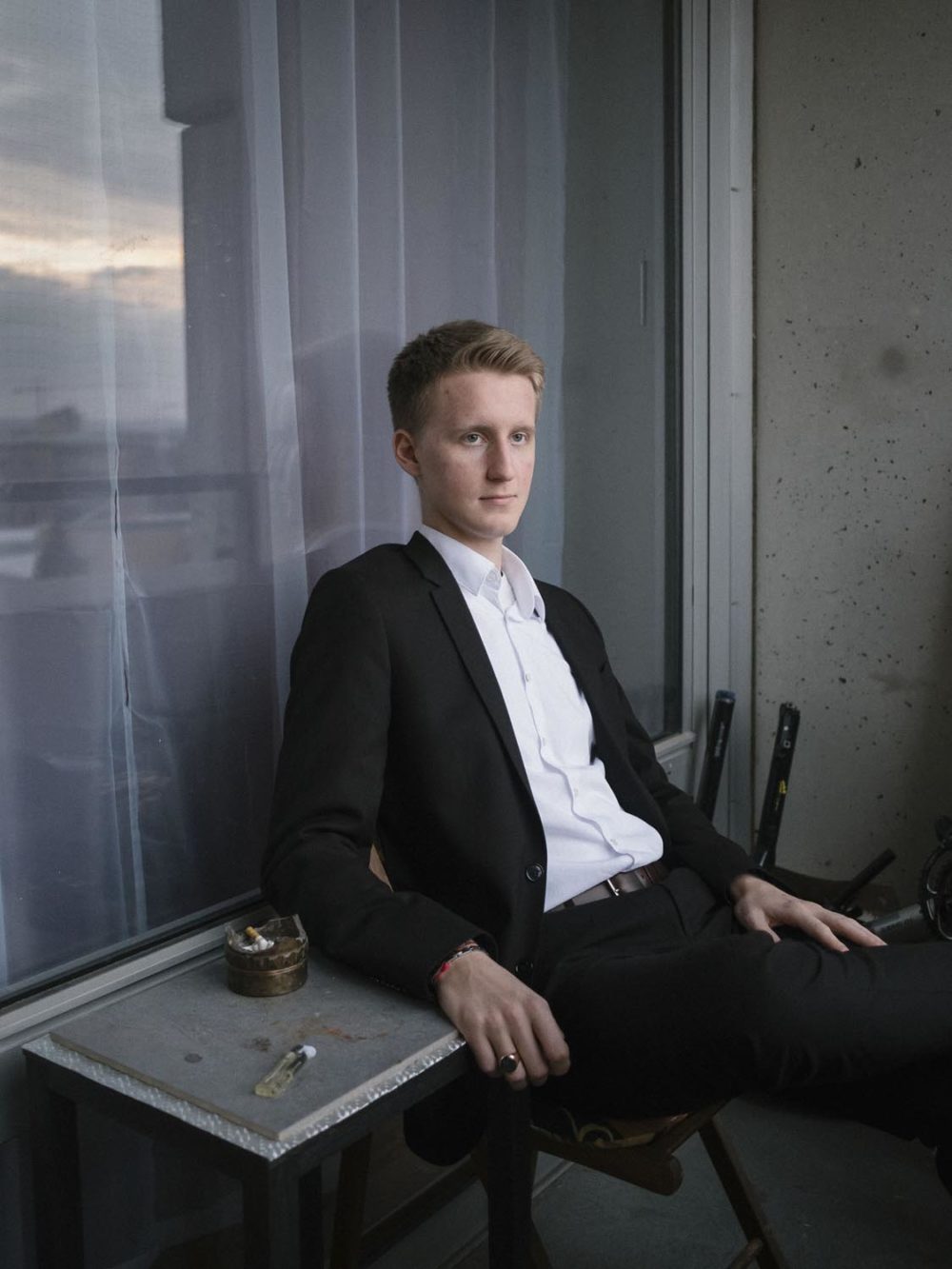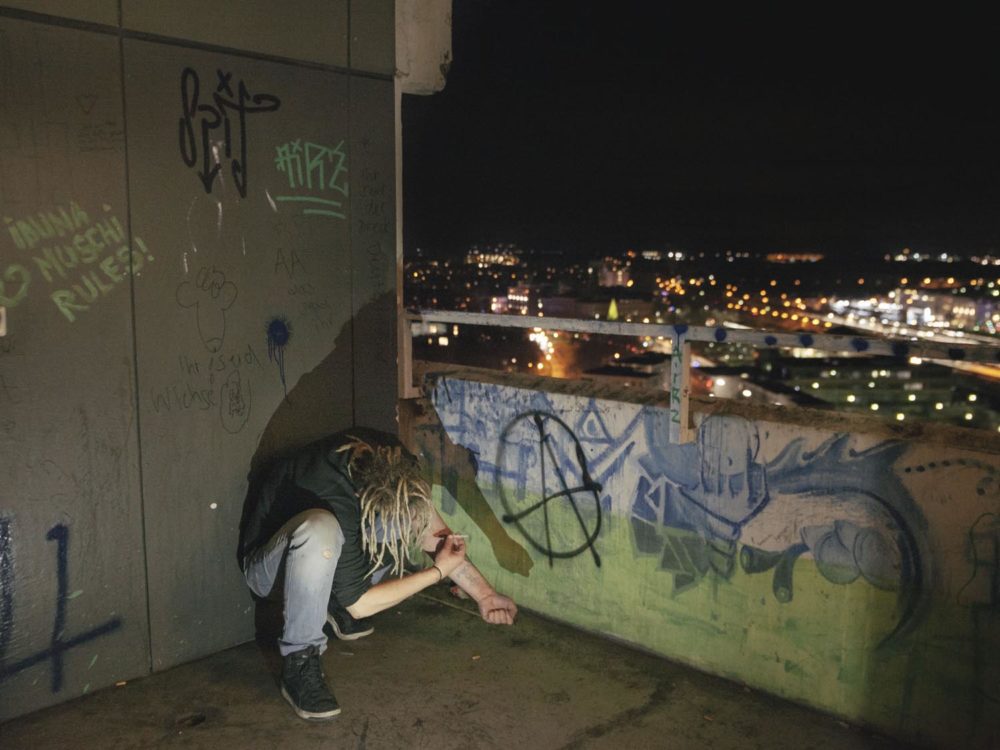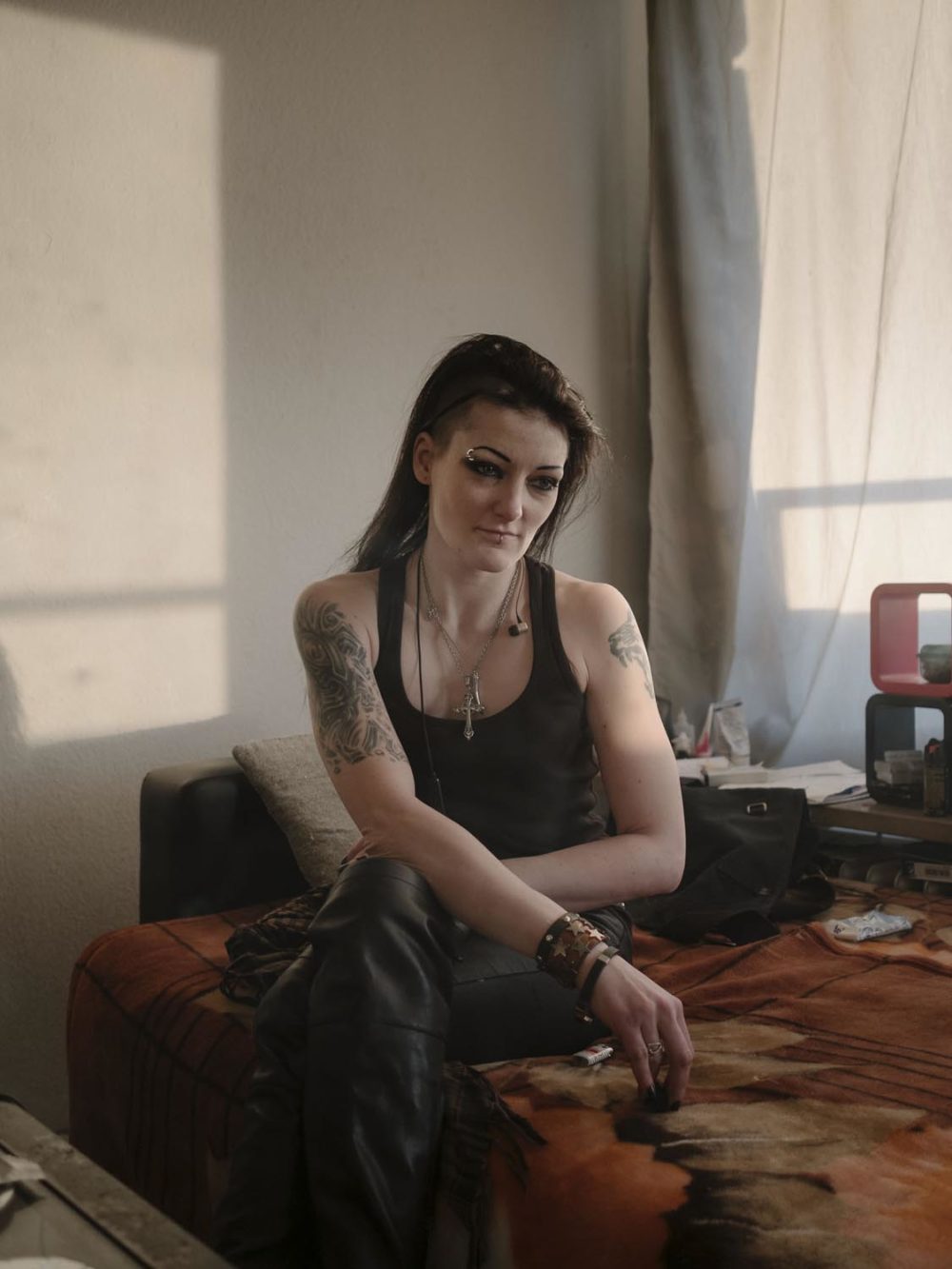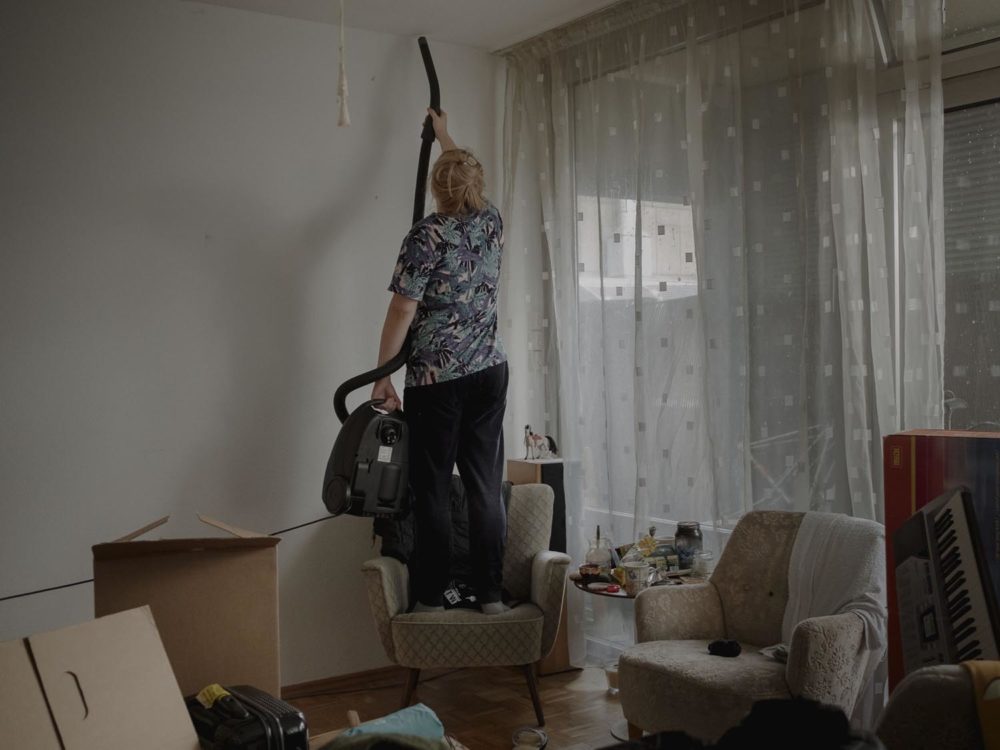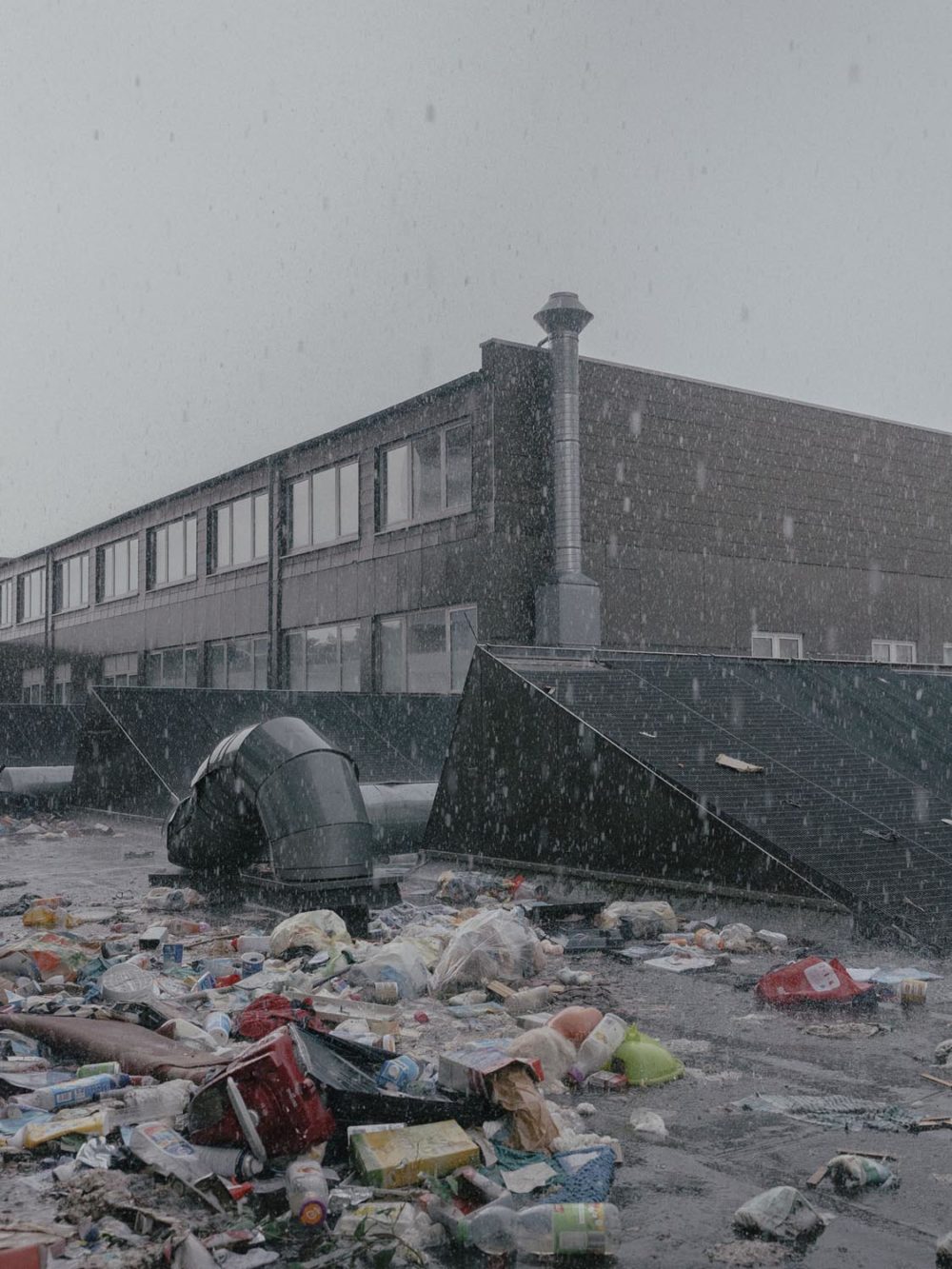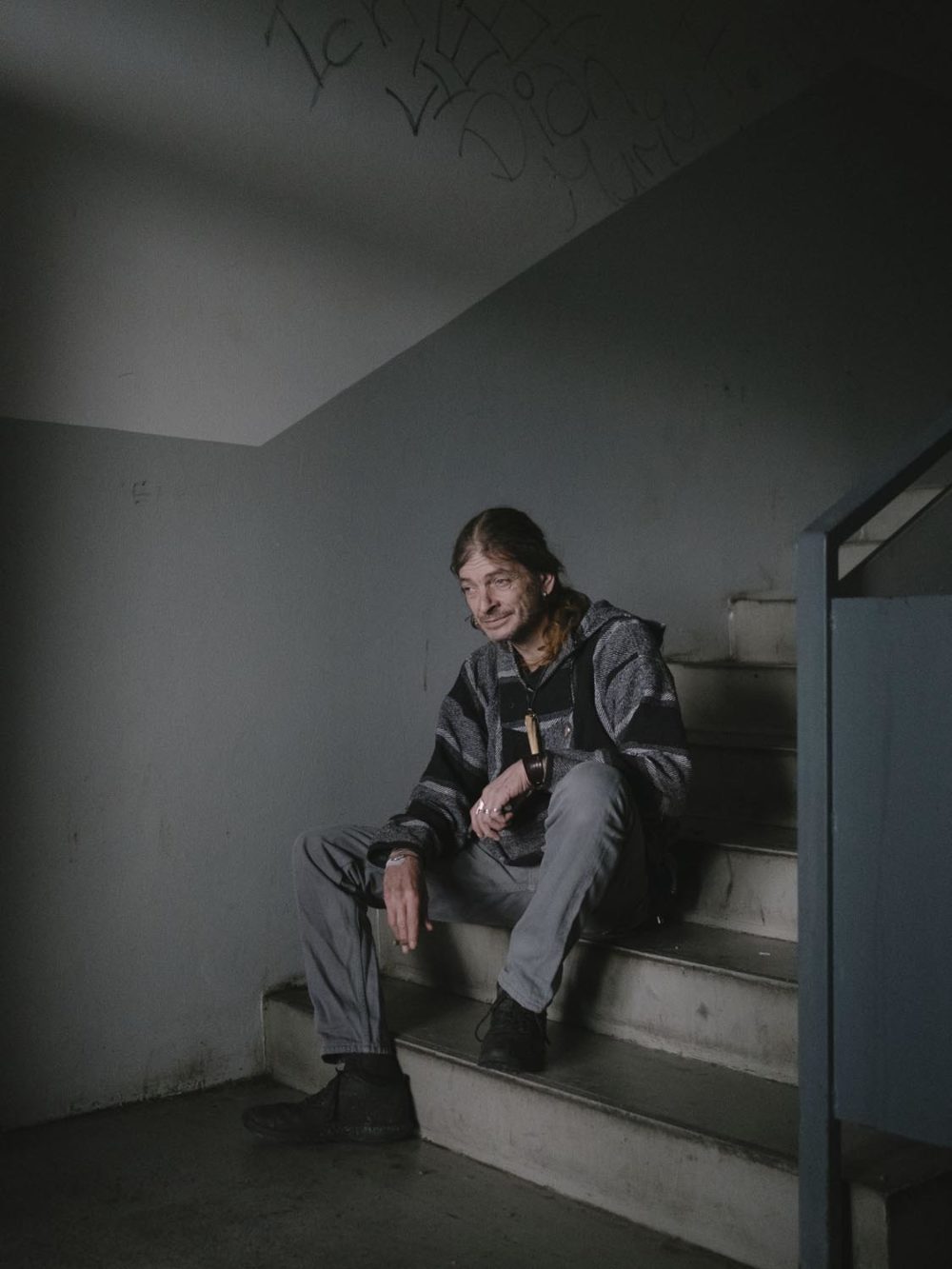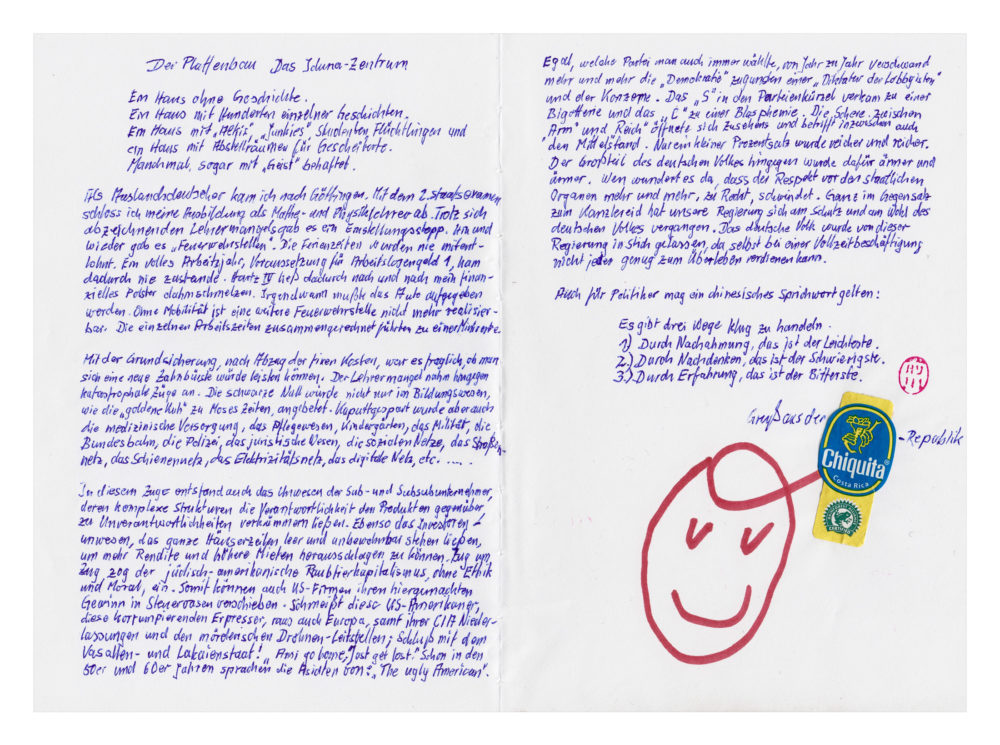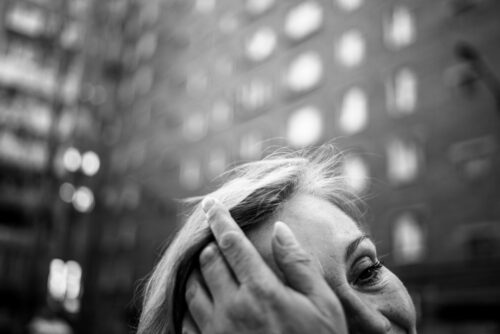Picture Series
Ingmar Björn Nolting Hinter Fassaden
When the 19-storey Iduna-Zentrum was built in the early 1970s, it was considered Göttingen’s most prestigious property. It featured 407 apartments, a swimming pool, sauna and shopping centre. Anyone who wanted to live here had to be able to afford it. However, over time the anonymous living model became increasingly unattractive. Many owners and renters moved out, and welfare recipients as well as refugees from the former Yugoslavia moved in. As the resident structure changed, so did the building’s reputation. The concrete block is now considered not only an eyesore, but a social flashpoint as well. The shopping centre is gone; the sauna and pool have closed. Most 1970s-era high-rises share the same fate – the residential complexes have become symbols of a failed urban-planning utopia. For this long-term photography project, Ingmar Björn Nolting moved into the building for five months and portrayed welfare recipients, refugees, drug addicts, students and pensioners living in old-age poverty.
- Architecture
- Community
- Drugs
- Everyday Life
- Germany
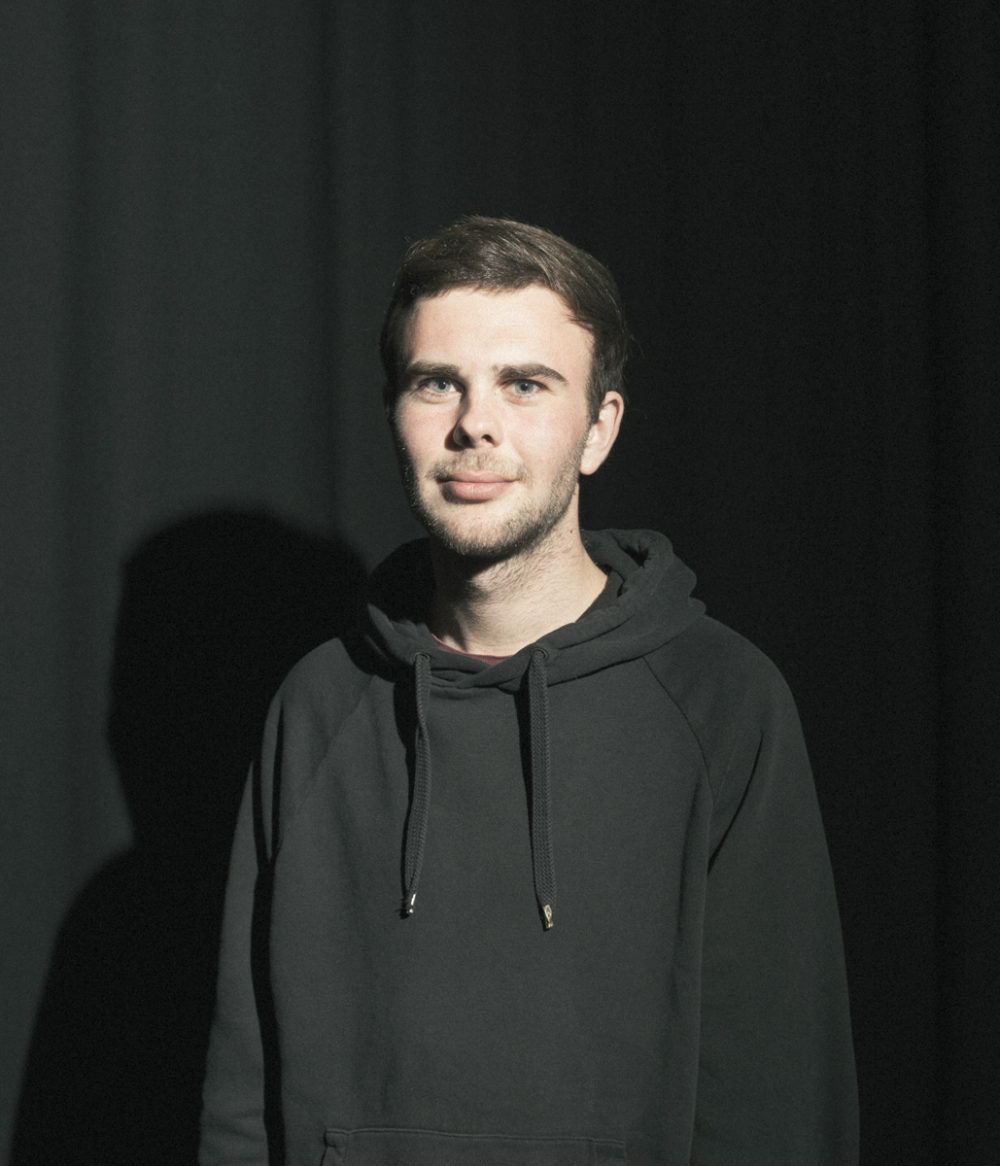
*1995 in Aalen, Germany
Ingmar Björn Nolting studied photography at Dortmund University of Applied Sciences and Arts. He currently lives in Leipzig and works as a freelance photographer. His long-term projects are devoted to documenting social, geographic and geopolitical isolation. In 2018, he won the Emerge Visual Journalism Grant for the project “Behind Façades”, which is being exhibited here. Along with four other photographers, Nolting founded the DOCKS Collective.
